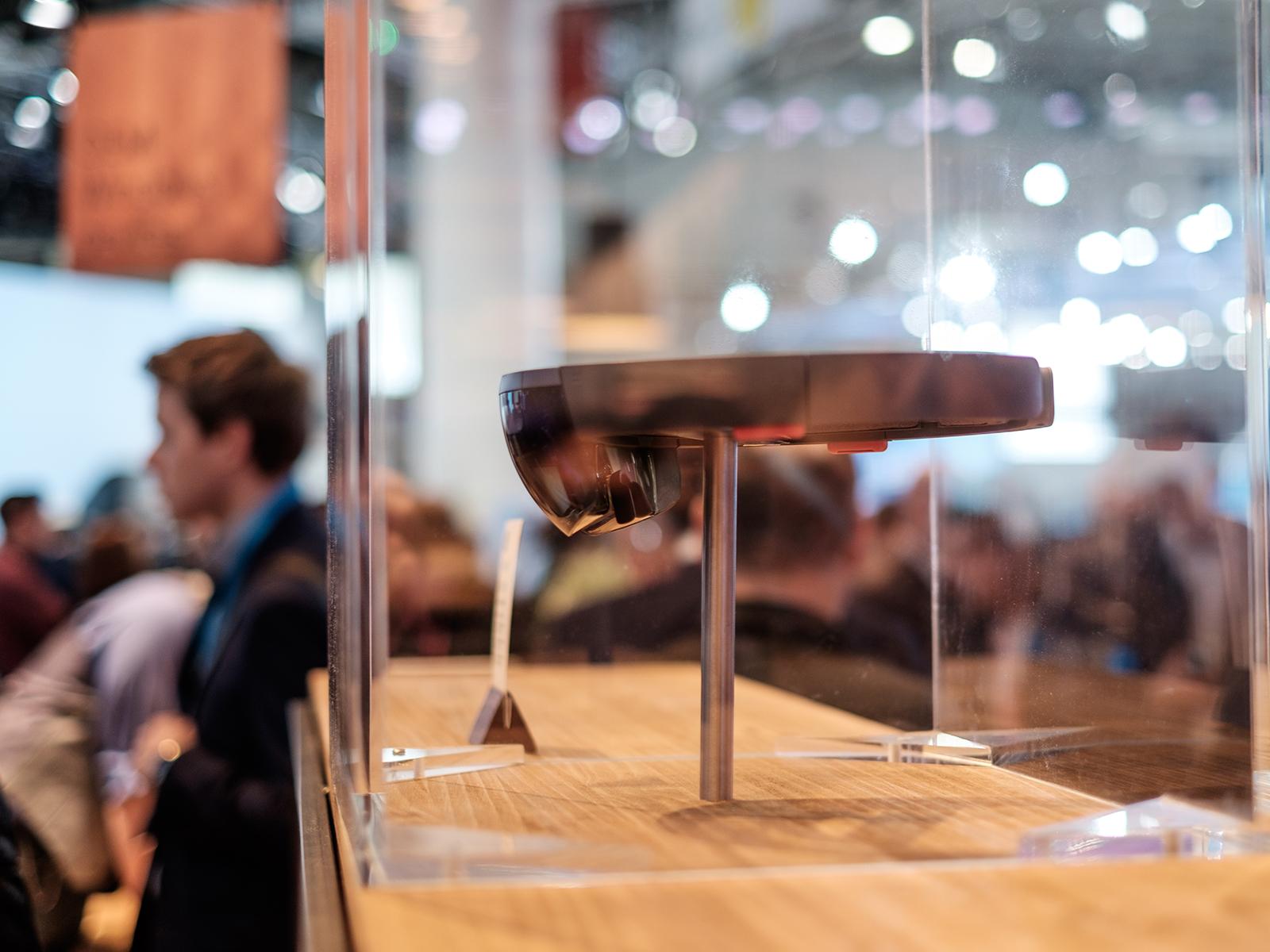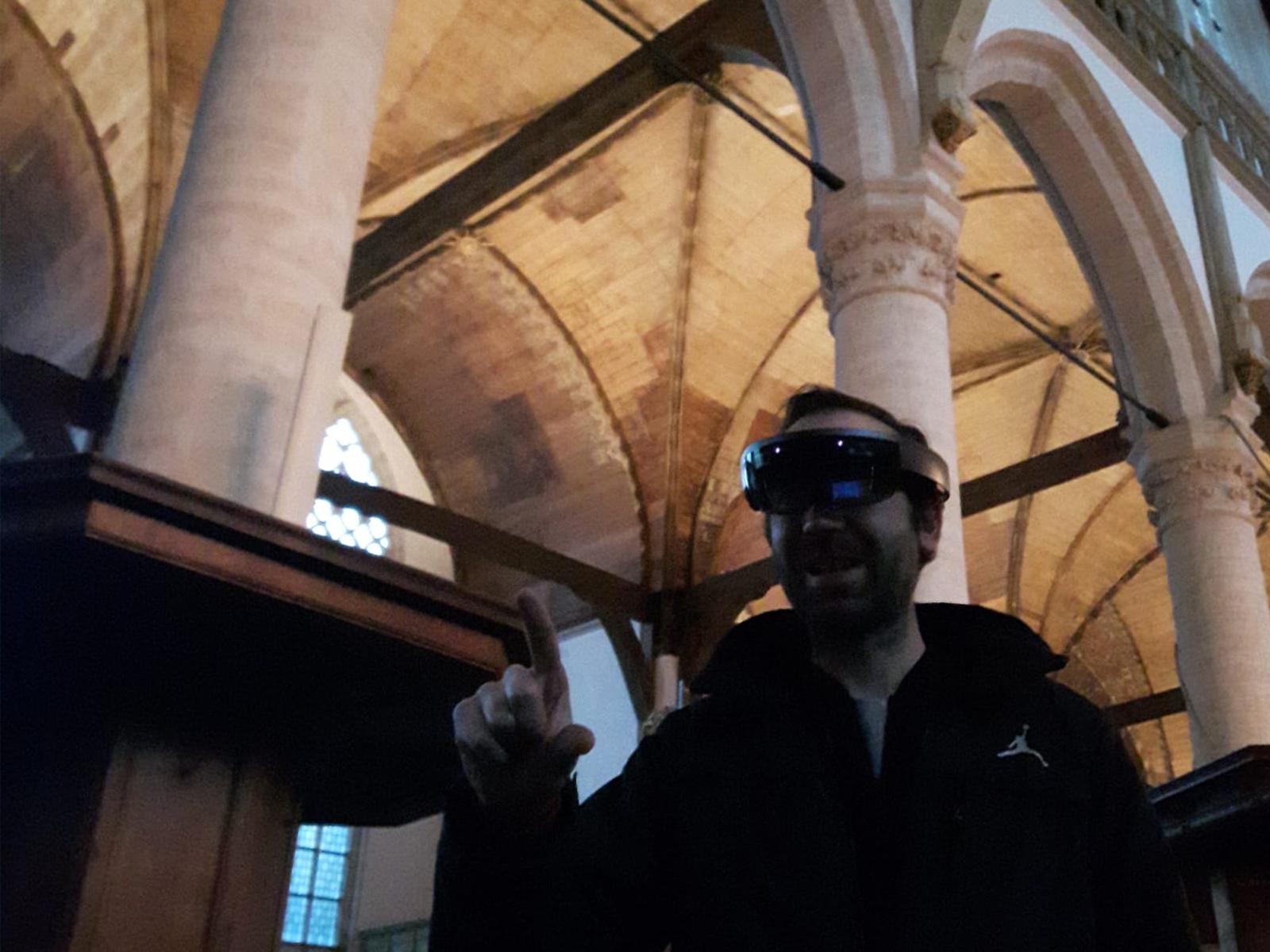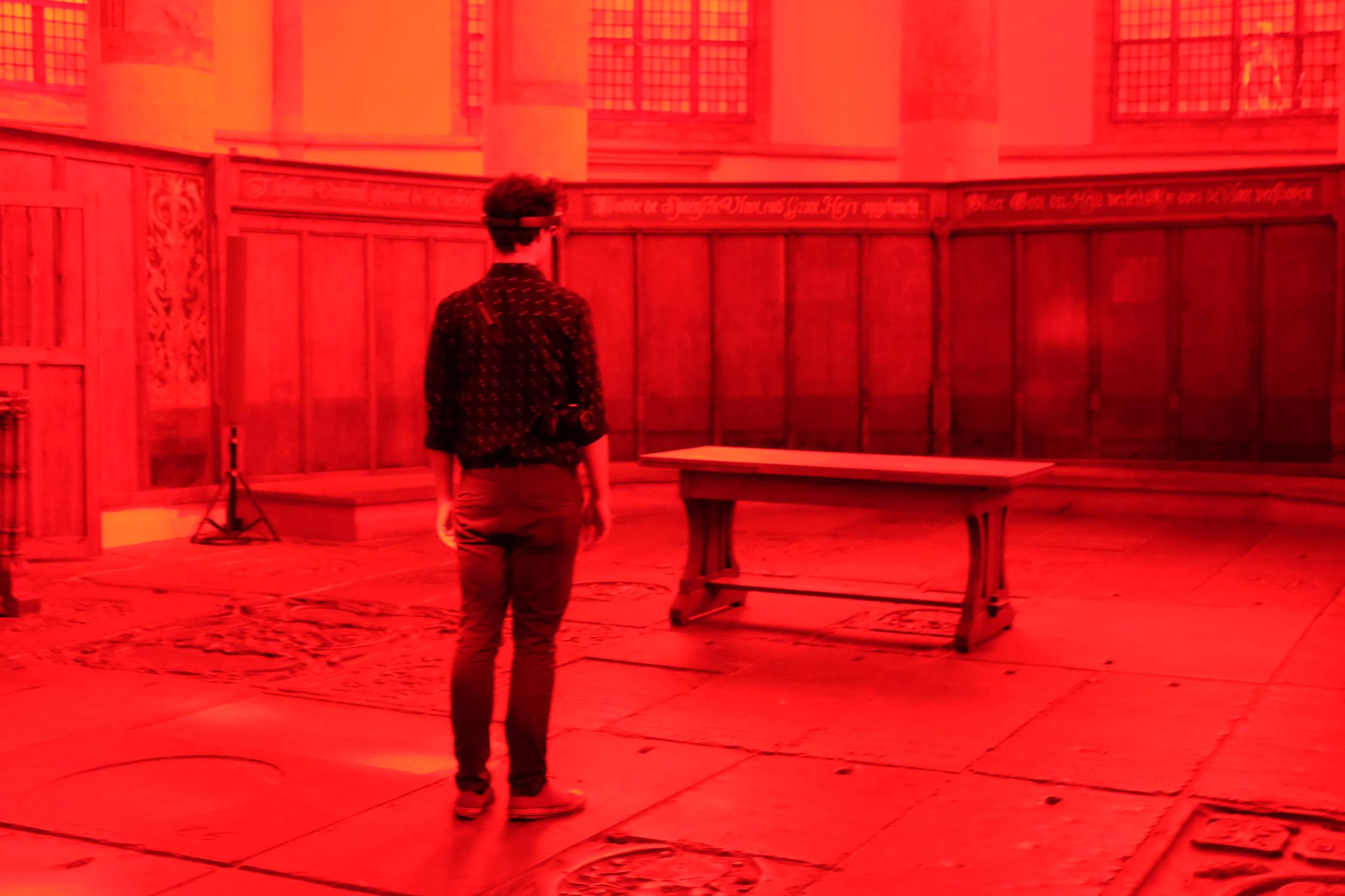For this blog we interviewed Marianna van der Zwaag, project leader at the Oude Kerk ('Old Church') in Amsterdam and involved in the project Mixed Reality @ Oude Kerk.
What was the reason for the Oude Kerk to study the possibilities and applications of mixed reality together with Waag?
Although the past in the Oude Kerk is omnipresent and tangible, parts remain invisible. How do you make it invisible, visible and experiential? That was an important question for the Oude Kerk. Moreover, there was a question: how do you stimulate the experience of new generations of visitors who visit the Oude Kerk? New generations who, due to current visual culture, often have more trouble with independently imagining the past. Applications such as mixed reality can then be valuable. Together with Waag we have explored the possibilities of augmented and mixed reality and we look at how we can specifically use the stories and the collection of the Oude Kerk, on the spot. We investigate which applications of mixed reality lead to a meaningful experience and what conditions are attached to it. The strength is not to let the technique dominate, but to stay with the core: evoke images (or their suggestion) that create a new, deeper experience.
How do you make it invisible, visible and experiential? What are surprising findings or findings from the research so far? How does the audience respond?
The first try-outs have already taken place. Here were images of apostles in the High Choir, who were smashed during the Iconoclasm of 1566, again visible by a hololens. This hololens looks like a washed out sunglasses, but conjures up images on the screen while the church remains visible. An extra layer is added to the reality around you. We notice that setting up the glasses is a unique, stand-alone experience for visitors. Every participant in the experiment looks differently through the glasses and experiences what you see through the lens in his / her own way. The glasses are still in full development. The window that you now see through the glasses is small so the total experience is not yet fully realized. In the next session the dramaturgy, the story line in the images, will be further elaborated.
How does the Oude Kerk intend to use the results in the future? Perhaps you can name some examples of future themes and exhibitions here, or the way in which you can bring programming and research together?
Mixed reality has enormous potential, also for the Oude Kerk. And within the programming augmented and mixed reality will definitely be used more. How exactly is not clear yet, but the research results are a good prelude.
What is the importance of mixed reality for the heritage sector in a broader sense?
The applications of mixed reality are endless: it is possible to exhibit objects that are not physically in space and for example to merge the past and present. I find interesting the doors that this technology opens for creating experiences with heritage in places outside the walls of the museum. There are opportunities! Certainly with new generations who deal with images differently.


